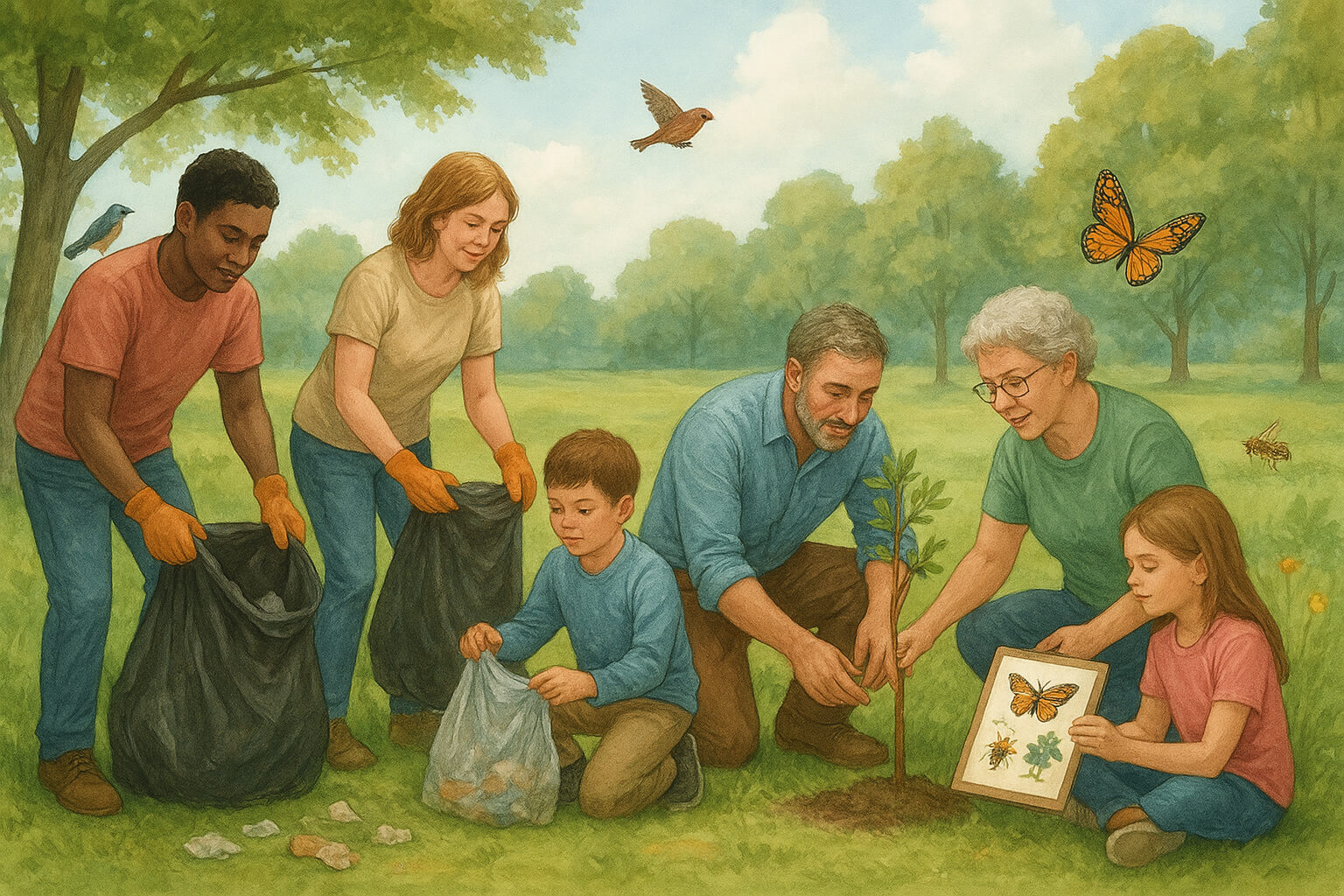How You Can Support Local Conservation Efforts

Conservation is often viewed as a global endeavor—protecting distant rainforests or endangered species on the other side of the world. While these global initiatives are critical, local conservation efforts play a vital role in preserving biodiversity, reducing environmental harm, and fostering resilient, sustainable communities. Whether it’s participating in community clean-ups, supporting green initiatives, or making eco-friendly lifestyle choices, every small action contributes to a healthier planet.
Why Local Conservation Matters
- Local ecosystems—forests, rivers, wetlands, and urban green spaces—are the backbone of environmental health. They provide essential services like clean air, safe drinking water, fertile soil, and habitats for wildlife. These resources are directly tied to our well-being. When these ecosystems suffer from pollution, habitat loss, or climate change, the effects are felt immediately within the community—through things like increased flooding, loss of biodiversity, and deteriorating air and water quality.
- Supporting local conservation efforts ensures that these ecosystems remain healthy and resilient. For instance, reducing the use of single-use plastics helps prevent harmful plastic waste from entering rivers and oceans, which threatens marine life and terrestrial ecosystems alike. According to National Geographic, plastic pollution has become one of the greatest threats to both marine and terrestrial ecosystems, affecting everything from sea turtles to human health.
- Community-driven solutions, such as recycling and composting, can significantly reduce waste and environmental damage. Check out this helpful guide on composting and landfill reduction to learn how to get started and reduce waste at home.
Practical Ways to Get Involved
There are many ways you can make a positive environmental impact right in your own community. Here are a few practical actions to get started:
1. Participate in Community Clean-Ups
- One of the easiest and most effective ways to contribute to local conservation is by joining or organizing community clean-up events. Whether it's cleaning up a local park, beach, or a stretch of road, these activities help to remove litter and debris, preventing pollution from harming wildlife and local ecosystems. Clean-ups are also a great way to connect with others who are passionate about protecting the environment.
- Many environmental organizations host monthly or quarterly clean-up events, which are open to the public. These events not only improve the local landscape but also raise awareness about waste management and the importance of reducing single-use plastics.
2. Support Pollinator Habitats
- Pollinators—like bees, butterflies, and other insects—are crucial for maintaining biodiversity and ensuring food security. Without pollinators, many crops and flowering plants would not survive, which could have devastating effects on both ecosystems and agriculture.
- Supporting pollinator habitats in your own backyard is a simple yet impactful way to contribute to conservation. Planting native flowers, herbs, and shrubs that provide nectar and shelter is a great start. You can also install bee hotels or butterfly houses to create safe spaces for these important creatures.
- Learn more about how pollinators contribute to ecosystems and why they’re so vital in this article.
3. Reduce Your Carbon Footprint at Home
Everyday choices we make at home can significantly reduce our carbon footprint and environmental impact. You don’t have to overhaul your entire lifestyle to make a difference. Small changes can have a big effect. Here are a few ideas:
- Switch to energy-efficient appliances that consume less power and reduce greenhouse gas emissions.
- Use less water by fixing leaks, installing water-saving devices, and practicing mindful water use.
- Cycle or walk instead of driving, especially for short trips. This reduces carbon emissions and promotes physical health.
- Compost food scraps to reduce waste going to landfills and enrich your garden soil.
To get started, consider conducting a home energy audit to identify areas where you can reduce energy use. Check out this simple guide on how to do a home energy audit.
4. Advocate and Educate
- Sometimes the most powerful way to make a change is by educating others and advocating for environmental policies. Help raise awareness about conservation by sharing information with friends and family, attending environmental events, or speaking out for eco-friendly policies at local town hall meetings.
- You can also volunteer with local environmental groups that focus on initiatives like tree planting, water conservation, and wildlife protection. These organizations often need volunteers for events or outreach programs.
- Finally, support local schools in integrating sustainability and environmental education into their curricula. Young people are the next generation of environmental stewards, and giving them the knowledge and tools to act is one of the best ways to secure a more sustainable future.
The Power of Community
- Sustainable living isn’t just about individual responsibility—it’s about collective action. When communities come together to focus on conservation, the results can be transformative. Collaborative efforts often lead to improved public health, strengthened social bonds, and long-term environmental benefits.
- For example, initiatives that promote sustainable agriculture or encourage small lifestyle changes for big environmental impact have shown to not only improve local ecosystems but also enhance economic resilience and create stronger community ties. Local action leads to tangible results that improve the quality of life for everyone.
Final Thoughts
- Local conservation efforts don’t need to be grandiose to make a significant difference. Whether it’s participating in a clean-up, planting a pollinator garden, or making more eco-conscious choices at home, every action contributes to the bigger picture.
- When individuals work together toward shared environmental goals, the collective impact grows exponentially. Through these grassroots initiatives, we can create a healthier, greener, and more sustainable world for future generations.
- Remember, conservation starts at home, and every small step adds up. Together, we can make the planet a better place—one community at a time.
